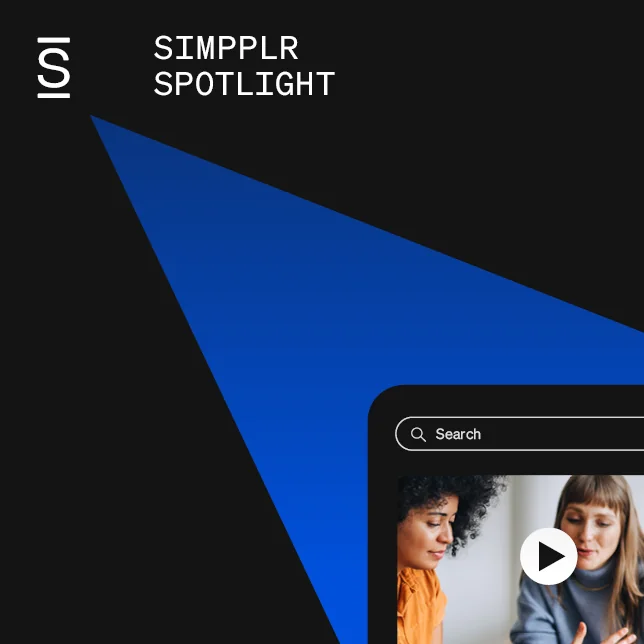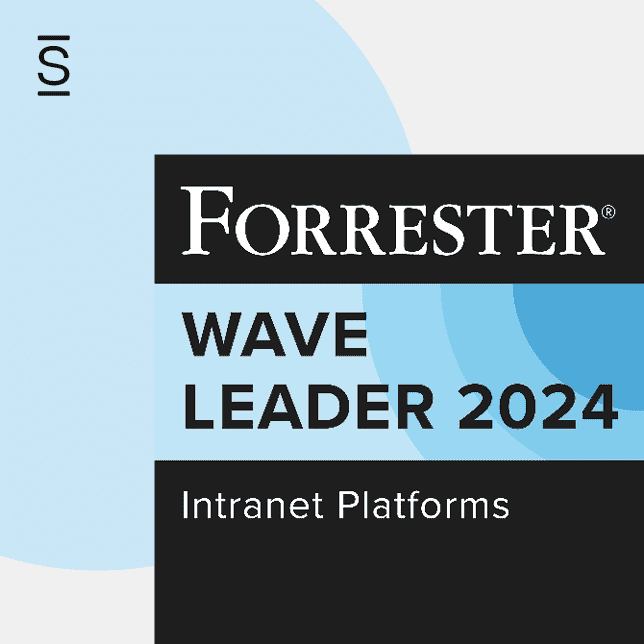In the dynamic world of financial services, creating an equitable employee experience (EX) is a challenge that demands attention from day one. As organizations navigate a competitive landscape, the importance of retention becomes paramount.
How financial services firms create equitable EX with HR
- Understanding the challenges financial services firms face
- Laying the foundation for equitable EX
- Cultivating a positive workplace culture
- Equity and understanding as retention pillars
- Getting candid about culture: A blueprint for effective onboarding
- Transforming HR: Expert tips and insights
- Committing to equitable EX: Strategies for HR leaders

Understanding the challenges financial services firms face
Financial services firms, known for their fast-paced nature and demanding environments, must adopt innovative strategies that focus on culture, onboarding and equity to retain top talent. So we wanted to delve into the unique challenges they face and explore how a holistic approach to EX — beginning with onboarding — can drive employee satisfaction and long-term engagement.
These firms operate in a high-pressure environment, often characterized by long hours, stringent regulatory requirements, and expectations for quick results.
This unique context presents several challenges for creating an equitable and inclusive work environment. From gender pay gaps to a lack of diversity in leadership roles, these firms grapple with ensuring that every employee feels valued and empowered.
Successful outcomes here call for a hard look at how an equitable environment impacts employees from day one and how it, combined with other factors, has the power to create a positive workplace culture.
Read on for an overview of each concept before we share insights captured during podcasts with two leading voices in the financial services industry.
Laying the foundation for equitable EX
The onboarding process serves as the cornerstone for building an equitable employee experience. Financial services firms must use this phase to communicate their commitment to diversity, equity and inclusion.
Clear communication of the company’s values and policies regarding equity sends a strong message to new hires, setting the stage for a culture of inclusion from day one.
Tailored onboarding programs that provide information on internal support networks, diversity initiatives and resources for career development can help mitigate potential feelings of exclusion.
Ensuring that new hires receive the necessary training, access to mentors, and opportunities for skill development fosters a sense of belonging and lays the groundwork for long-term success.
Related: 5 employee onboarding best practices
Cultivating a positive workplace culture
The financial services industry has often been characterized by its competitive nature, leading to instances where individual accomplishments are prioritized over collaboration.
Firms must pivot toward a culture that emphasizes teamwork, collaboration and mutual respect to retain top talent.
Creating a sense of camaraderie and unity within teams can help counteract the intense pressure and foster a supportive environment where employees are more likely to thrive.
Leadership within financial services firms plays a critical role in shaping culture. Senior executives can positively influence culture by:
- exemplifying the desired values and behavior, setting an example that trickles down through the organization
- encouraging open communication
- recognizing and rewarding collaboration
- actively promoting diversity in leadership roles
These actions are essential to cultivating a positive workplace culture and improving top talent retention.
Related: Importance of strong organizational culture
Equity and understanding as retention pillars
And then we come to addressing equity, which is not just a moral obligation but a business imperative.
Employees who perceive a lack of equity are more likely to seek opportunities elsewhere.
Firms must take proactive measures to eliminate hiring, promotions and compensation bias. Regular diversity and equity training for employees and leaders can foster awareness and empathy, promoting a fair and just work environment.
Equity initiatives should extend beyond hiring to encompass career growth opportunities. Providing access to mentorship programs, skills training and leadership development for underrepresented groups can help level the playing field and encourage diverse talent to pursue long-term careers within the organization.
Related: How Xilinx designed their unique platform to lead to inclusive employee engagement
Getting candid about culture: A blueprint for effective onboarding
“Being an HR professional in today’s climate, every day there is going to be something that comes up that you’re like, ‘Hmm, didn’t see this coming. Don’t really know how to handle this. It’s uncomfortable, but I’m going to figure it out.’ So just get comfortable living with the discomfort and you’ll continue to grow and thrive.” ~ Debbie Gunning, VP of People at Human Interest
 Debbie Gunning, Vice President of People at Human InterestNow let’s move beyond this surface understanding of these needs and get candid about culture with Debbie Gunning, Vice President of People at Human Interest. She’s been managing the complexities of a geographically distributed workforce at Human Interest since COVID began. Two years ago, the company was a 50-person office in San Francisco. Its hiring needs then accelerated during a period of rapid growth. Today, Human Interest employs more than 700 people, two-thirds of whom are full-time remote workers.
Debbie Gunning, Vice President of People at Human InterestNow let’s move beyond this surface understanding of these needs and get candid about culture with Debbie Gunning, Vice President of People at Human Interest. She’s been managing the complexities of a geographically distributed workforce at Human Interest since COVID began. Two years ago, the company was a 50-person office in San Francisco. Its hiring needs then accelerated during a period of rapid growth. Today, Human Interest employs more than 700 people, two-thirds of whom are full-time remote workers.
During her Cohesion Podcast episode, Debbie shared the relationship between onboarding and employee retention, the importance of culture during growth spurts, and how her team transitioned to a virtual onboarding experience.
How to define and develop culture as part of the onboarding process
An intentional onboarding process is transformative. Debbie says that onboarding begins the moment an offer is accepted. It’s a high-touch experience aimed at alleviating new-hire stress by providing a clear roadmap of what to expect during the first week. With personal outreach and thoughtful gifts, this pre-boarding phase sets the stage for a positive experience.
However, culture-building doesn’t stop at providing materials and information. Debbie emphasizes the importance of weaving executive leadership sessions into the onboarding process. These sessions present a high-level overview of the company, shared by leaders from various departments.
This approach bridges the gap between individual roles and the broader organization, fostering a sense of belonging and interconnectedness.
Additionally, unique elements like “buddy breaks” — where new hires engage in 15-minute coffee chats to establish connections across the company — complement tactical HR and benefits sessions. Virtual employee resource groups (ERGs) also help foster community, connecting employees who live near each other and share common interests.
An essential aspect of culture-building is infusing a sense of fun and uniqueness. At Human Interest, this takes the form of including a “new job” candle in the welcome gift for a light-hearted, personal touch.
How a strong onboarding experience leads to employee retention
The correlation between a well-designed onboarding experience and employee retention is undeniable. Organizations with strong onboarding processes boast a new-hire retention rate of about 82%.
A comprehensive and coordinated onboarding experience deepens employees’ sense of connection to the company, leading to increased retention.
Debbie cites instances where employees who had not participated in the full onboarding program were more likely to exit within six months.
And retention isn’t just about retention; it’s about fostering an environment where employees want to stay and grow. A robust onboarding program contributes to increased productivity and engagement, setting the stage for employees to thrive in their roles.
By addressing the human aspect of onboarding — building connections, facilitating interactions, and ensuring a smooth transition — an organization establishes a strong foundation for long-term success.
Related: New hire onboarding survey questions every company should consider
The opportunities and challenges of virtual onboarding
With the sudden shift to remote work, virtual onboarding became a necessity. Transitioning to a digital landscape brought about a unique set of opportunities and challenges.
One of the most significant advantages of virtual onboarding is the ability to reach talent beyond geographical limitations.
Companies can now tap into a diverse pool of candidates, regardless of their location. However, ensuring a meaningful onboarding experience in a remote setting requires deliberate planning and execution.
Virtual onboarding is more than just adapting in-person processes to an online format. Debbie highlights the importance of:
- making virtual sessions interactive and engaging
- breaking them down into shorter segments
- incorporating regular breaks
The challenge lies in creating an environment where employees can form genuine connections and feel a sense of belonging despite the physical distance.
Onboarding success requires a multifaceted approach
The journey of “Getting Candid about Culture” during the onboarding process requires a multi-faceted approach in financial services, and in any industry. Beyond the practicalities of paperwork and benefits, there lies a realm of human connection, culture infusion and intentional design.
As organizations continue to navigate the challenges of a remote work environment, the lessons from Debbie’’s insights serve as a blueprint for not only welcoming new employees but also cultivating a culture that thrives in the virtual realm.
Transforming HR: Expert tips and insights
So how does one revamp employee experiences, overcome challenges, and nurture personal growth in the HR field? It takes a transformation.
1. Rethink traditional approaches
Debbie emphasizes breaking away from conventional HR methods. She encourages new HR leaders to shed preconceived notions, embrace innovation, and explore fresh strategies for improving employee experiences — including onboarding. Wipe the slate clean and dare to try new, unconventional approaches.
2. Embrace change and feedback
Feedback and measurement are key components of HR success. Debbie underscores the importance of actively seeking feedback and measuring the effectiveness of strategies. By doing so, HR professionals can identify areas for improvement and implement necessary changes to enhance the employee experience.
Change is an opportunity for growth and innovation.
3. Ensure employee well-being
Debbie predicts future challenges for HR professionals, notably in supporting employee mental health and addressing the aftermath of the pandemic. With a focus on the long-lasting effects on mental health and stress levels, she stresses the need for ongoing support and flexibility. As the world transitions to a new normal, HR leaders in the financial services sector and beyond must prioritize both employee well-being and the evolving concept of office work.
4. Manage the remote work dilemma
Maintain a clear boundary between work and personal life. Debbie acknowledges the stress and mental health implications of this issue and highlights the need for employers to address the unique challenges that remote workers face, even as the work landscape evolves.
5. Invest in personal growth
Debbie reveals her approach to personal growth as an HR leader:
- embracing vulnerability
- acknowledging gaps in knowledge
- surrounding oneself with experts
This strategy fosters a culture of continuous learning and development. Her advice resonates with HR professionals looking to expand their skill sets and become well-rounded leaders.
6. Embrace discomfort to thrive
Become comfortable with discomfort, as it’s an essential aspect of growth. By confronting challenges head-on and continuously adapting, HR leaders can thrive in a rapidly changing environment.
As financial services and companies in other sectors continue to adapt to new realities, Debbie’s wisdom serves as a guiding light for HR professionals seeking to excel in their roles and make a positive impact on their organizations.
Companies will only get so far, though, if they’re not acknowledging the importance of an equitable employee experience.
Related: Proven strategies for increasing employee retention rates
Committing to equitable EX: Strategies for HR leaders
“I really think the future of work is all about employee experience. … We really need to win over the hearts of our people if we want an engaged workforce” ~ Danielle Tabor, Chief People Officer at Emburse
 Danielle Tabor, Chief People Officer at EmburseWe connected with Danielle Tabor, Chief People Officer at Emburse, to explore the ramifications of getting an equitable EX in financial services wrong, as well as the incredible potential it unlocks for companies striving to get it right. Danielle has over 15 years of experience in human resources, working in the biomedical, architecture and financial industries.
Danielle Tabor, Chief People Officer at EmburseWe connected with Danielle Tabor, Chief People Officer at Emburse, to explore the ramifications of getting an equitable EX in financial services wrong, as well as the incredible potential it unlocks for companies striving to get it right. Danielle has over 15 years of experience in human resources, working in the biomedical, architecture and financial industries.
In her Cohesion Podcast episode, she talked about work-from-home burnout, HR’s ability to adapt, and the importance of an equitable employee experience.
How to ensure an equitable EX: Challenges and opportunities
In the evolving landscape of work, where remote and hybrid models have become the norm, ensuring an equitable employee experience has taken center stage. HR leaders can navigate the challenges and opportunities of creating an equitable employee experience for their teams with a little forward planning.
Create an inclusive hybrid work environment
Challenge: Ensure a balanced employee experience for those working remotely, in-office, or both
Danielle explains that Emburse shifted to a hybrid model to cater to the diverse preferences and cultural DNA of its workforce. However, implementing a successful hybrid strategy requires addressing technical issues in hybrid meetings and providing spaces where employees feel comfortable and supported, whether at home or in the office.
Opportunity: Establish inclusive technology and meeting norms
Equity is a core consideration in hybrid work.
Danielle emphasizes the role of technology in enabling an inclusive experience for both remote and in-office employees. Rehearsals for hybrid meetings help identify potential issues and ensure that everyone is effectively engaged, regardless of their location. Fostering inclusive meeting norms, such as avoiding side conversations, contributes to a supportive and collaborative environment.
How to combat employee burnout: Challenges and opportunities
Challenge: Recognize and address the increased risk of burnout when working from home
Recognizing that remote employees were at an increased risk for burning out, Emburse introduced several programs aimed to help employees rest and recharge.
Opportunities: Create space for employees to prioritize well-being and growth and development
By creating a space for employees to prioritize mental health, engage in personal activities, and disconnect from work-related stressors, financial services and other organizations can help alleviate burnout and enhance overall well-being.
For example, designated “Emburse Unplugged Days” involve a company-wide shutdown, promoting a collective break from work-related communications.
To further combat burnout, offer a variety of learning formats and opportunities for personal growth. This helps organizations foster a sense of purpose and rejuvenation among employees.
For Emburse, this took the form of “Emburse Educate Days,” which emphasize continuous learning and development — allowing employees to engage in activities that stimulate their minds in different ways.
Related: How to foster professional development in the workplace
How to improve the HR function through feedback
Embracing hybrid work models, prioritizing mental well-being through designated breaks, and fostering continuous learning opportunities can collectively contribute to an empowered and engaged workforce.
In addition, adapting communication styles to suit diverse learning preferences ensures that HR remains a cornerstone of employee support and growth.
Transition from micromanagement to empowerment
The pandemic necessitated a shift in management styles, moving away from micromanagement toward a more empowering approach.
- Trust employees to manage their tasks and deliver quality work. This opens another door for organizations to recognize employees’ capabilities and strengths.
- Provide coaching, feedback and opportunities for growth. This enables managers to create spaces where employees can thrive while contributing their best work.
Meeting employees where they are
Danielle’s background in adult education underscores the importance of tailoring communication and learning experiences to different learning styles and preferences.
Just as Emburse educates employees through diverse formats, HR leaders can enhance employee engagement by customizing communication methods to resonate with individual preferences.
Customizing communication styles creates a more inclusive and engaging employee experience.
By committing to these strategies, HR leaders can successfully navigate the challenges of the evolving work landscape while fostering a culture of equity and growth.
Related: 4 pillars of a successful HR strategy
How to foster equitable employee experience in financial services
Over the next five years, there are imminent challenges awaiting HR professionals in the financial services industry. Danielle contends that the pivotal factor for success lies in the employee experience. She highlights how the COVID-19 pandemic catalyzed a profound shift, making EX a top priority for organizational success.
1. Meet real needs for comprehensive EX
Danielle underscores the significance of understanding the genuine needs of employees and making tangible efforts to meet those needs. Beyond the essentials like stability, income and benefits, she encourages organizations to consider the whole employee — taking into account factors such as family, community and even social and environmental impact. This comprehensive approach is essential for creating a fulfilling and engaged workforce.
2. Create an engaged workforce by winning hearts and minds
To foster engagement, Danielle emphasizes the importance of creating a work culture that wins over the hearts and minds of employees.
Cultivate an environment where employees feel valued, heard and empowered.
Open-mindedness and adaptability are crucial traits for HR leaders aiming to navigate the challenges and evolving demands of the future workplace.
3. Balance the whole human
Danielle relates her personal experience as a pregnant employee with a young child and how her company recognized and addressed her unique needs. She underscores the value of considering the holistic human experience, encompassing both personal and professional aspects. This acknowledgement and support contribute to a positive employee experience.
4. Expand networks and empower teams
Offering advice for those stepping into HR roles, especially during a time of remote work and pandemic-induced changes, Danielle provides two key insights:
- Expand your networks to connect with peers in people operations and across industries to gain insights and perspectives.
- Build a capable team and empower them to contribute creatively to shaping the employee experience.
5. Solicit feedback and coaching
Seeking input from various sources — employees, team members and peers — is a vital tool for self-improvement. Danielle also emphasizes the power of coaching for fostering vulnerability and growth in her role.
6. Embrace core values as a guiding light
Robust company values and a mission that resonates with employees are both “must-have” items. Danielle says Emburse’s core values — sincerity, empathy, empowerment, individuality and teamwork — guide the organization’s decisions, from hiring to promotions.
By staying true to your company’s values, you can create a humanized and authentic work culture that thrives in the face of challenges.
The bottom line: Employee experience will play a critical role in addressing upcoming HR challenges in financial services. By emphasizing a comprehensive, inclusive and holistic approach, HR professionals can create a work environment that engages, retains and empowers employees for long-term success.
Paving the path to equitable EX and future success in financial services
Navigating the intricate landscape of financial services requires more than just financial acumen — it demands a holistic approach to employee experience that begins with effective onboarding, embraces culture cultivation, and commits to equity.
In this ever-changing environment, the journey toward an equitable EX is not just an option —it’s a necessity for fostering a thriving workforce and ensuring organizational success.
We began our exploration by understanding the unique challenges faced by financial services firms. The demanding nature of the industry coupled with the need to retain top talent underlines the importance of an equitable and inclusive work environment.
In response, we delved into the blueprint for effective onboarding, where culture is defined and values are communicated from day one. We learned that onboarding is not just about paperwork; it’s about connecting individuals to the broader mission and weaving a sense of belonging into the organizational fabric.
Cultivating a positive workplace culture emerged as a vital cornerstone for addressing these challenges. Through teamwork, collaboration and leadership that exemplifies desired values, financial services firms can shift from competitive environments to collaborative ecosystems that nurture employee growth and engagement.
Equity took center stage as a retention pillar, emphasizing the necessity of eliminating bias in hiring and promotions.
A focus on equity extends throughout an employee’s journey, from onboarding to career development, ensuring every individual has equal opportunities to excel.
The candid conversations with industry experts, Debbie Gunning and Danielle Tabor, shed light on the critical elements of effective onboarding and fostering an equitable EX.
- Debbie’s insights illuminated the power of personal touches, leadership sessions and interactive onboarding methods to enhance the employee experience and drive retention. Her exploration of the challenges and opportunities presented by virtual onboarding highlighted the need for innovative approaches to keep remote employees connected and engaged.
- Danielle’s perspective on the importance of equity in the evolving work landscape underscored the significance of creating an inclusive hybrid work environment. Her emphasis on using technology to bridge gaps and addressing remote work burnout through designated breaks and ongoing learning initiatives demonstrates the role of HR leaders in championing employee well-being.
As the financial services industry and workplaces at large continue to evolve, HR professionals are at the forefront of shaping the employee experience. Their ability to adapt, embrace discomfort, and foster a culture of equity and growth will be instrumental in steering organizations toward a future where employees not only survive but thrive.
By committing to an equitable EX, financial services firms can attract, retain and empower the talent that drives success, ensuring a sustainable future in an ever-changing world.














